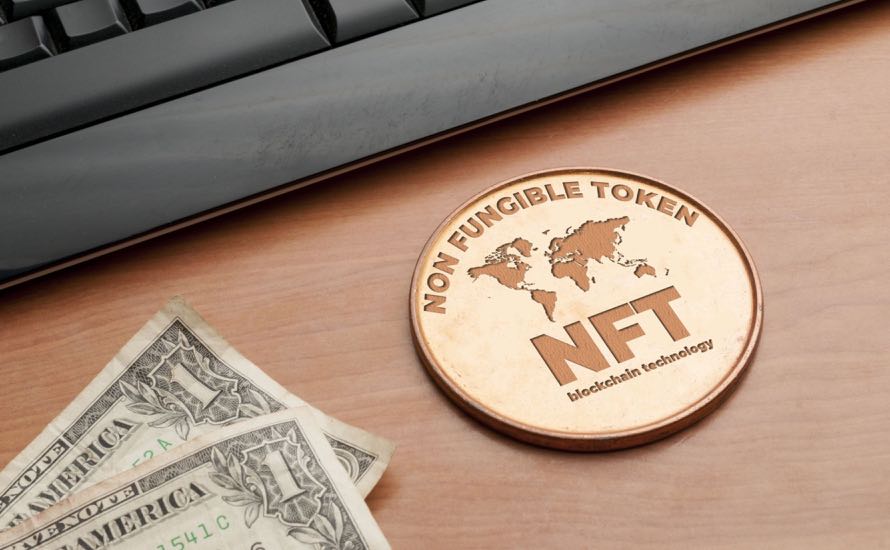Non-fungible tokens (NFTs) have caught people’s attention. For those interested in collecting original digital assets, NFTs have become the new way to legitimize ownership of anything that can be digitized.
An asset is fungible if one unit can be directly exchanged for any other unit of the same asset. In other words, each unit of the asset is indistinguishable. For example, your $20 note is exactly equivalent to my $20 note. In contrast, an asset is non-fungible if each unit of the asset has distinct characteristics. Examples of non-fungible assets would include things like buildings, art, music, and other creative work.
NFTs are similar to cryptocurrency in that they use blockchain technology to record data. However, unlike cryptocurrency, each NFT is unique, allowing a collector to become the sole owner of a token by acquiring it. NFTs cannot be duplicated because they are cryptographically secured on a blockchain, which functions like a decentralized database that is automatically confirmed by all of the other parties to the network, making it highly reliable and trustworthy.
An interesting recent transaction reported by Business Insider is a video of a golden gummy bear being sold for $1 million. As strange as this may seem, it is one of many record breaking sales that have taken place. There have been sales of tweets, music videos, collectables, art, gifs, and other creative work.
It might make sense to think of NFTs as a means of buying an autographed copy of a digital asset and getting a digital certificate of legitimacy. While an NFT token vests ownership rights over the original, many people can still access and even duplicate the content which the token represents. Even the video of the golden gummy bear can still be viewed and downloaded. This might be analogous to the difference between owning the Mona Lisa and having a duplicate on your wall. They are similar, but the original is worth far more.
Exploring “nifties” (another term for digital collectables or NFTs) is as simple as visiting websites such as Nifty Gateway or Raribles. These sites are user friendly and a simple way to browse the digital items being sold.
The possibilities offered by NFTs are exciting. However, it is not an area that the average consumer should jump into headfirst without a thorough understanding of what they are getting into. It is still complicated for most people to get their heads around blockchain technology and how to use it. Commentators have questioned the value of NFTs as they represent digital items that are accessible to everyone. Economists refer to these types of goods as “non-excludable”, which are difficult to price because you cannot exclude people who haven’t paid. This is no small concern to overlook because scarcity is one of the key factors that drives market value. Since the microeconomic and macroeconomic implications of NFTs have not yet been thoroughly studied this creates uncertainty and regulatory risk for anyone using the technology. There is speculation that the Ethereum blockchain, the platform used for NFTs, may face scalability problems due to increasing transaction volumes, high transaction fees and slow transaction times. Blockchain technology also requires significant power to operate, which has attracted negative attention from climate change activists.
NFTs can be used by gamers, content creators, art collectors, or anyone who has something to buy or sell. The market is difficult to categorize because it is virtually possible to trade anything. NFTs function as certificates of title that verify ownership of digital assets. As a result, traditional online marketplaces (like eBay or Amazon), which may have taken years to establish, now face competition from NFTs, which allow buyers and sellers to trade more independently. The main adopters of NFTs are sellers who gain a way to sell less standardized goods with more flexibility. For example, creators might float shares in an NFT and allow buyers to acquire a stake using a shareholder model. Like a class of stock, an NFT could have special rights, preferences or privileges attached to it, such as artists earning royalties whenever their work is re-sold. Creators can do this by attaching their address to a token’s metadata, which cannot be changed. NFTs can allow creators to receive royalties directly rather than working through an agent who takes a large commission. The terms and conditions that could be coded into an NFT, which can be viewed as a smart contract, are almost limitless and have barely been explored.
The future for NFTs looks bright. They are likely to continue being developed with the NFT market currently growing on both the demand and supply side (Non-fungible Tokens Yearly Report 2020, pp 24-26). As the world becomes more technologically advanced, convenience and security are becoming more important. Since NFTs are unique and secure, one would only need to prove their cryptographic ownership of an NFT in order to access what the token is attached to. If you have purchased a digital asset, or any other form of property, your cryptographic signature will be enough to verify your ownership and grant you access to the asset.
Non-fungible tokens are an amazing innovation and offer a new method of trade that may change the way markets function. People will gain more access to anything that can be tokenized, and creators will gain more control over their own creations. It will be worth monitoring this space to see how the technology develops.
Rhulani (Ruce) Ndlala is an accounting student at the University of Cape Town, and former President of the UCT Consulting Club.
Image: iStock
